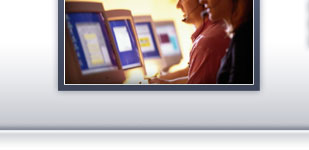
November, 2000
AEDs: Not As Common As The Office Water Cooler--But A Lot More Helpful In Saving Lives
By Peter P. Greaney, MD
Board-Certified Occupational Physician
President, WorkCare
Although the automated external defibrillator (AED) may never be as commonplace as the office water cooler, the device is beginning to appear in more businesses as a way of saving lives from sudden cardiac arrest.
Several nationally recognized companies have taken the lead in managing on-site medical emergencies by using AEDs in the workplace. These companies include IBM, Honda of America, General Mills and Dow Chemical Company. The increased use of these devices points to the fact that there is greater “buy-in” from Corporate America about the benefits that AEDs bring to the workplace.
Although the value of AEDs is apparent, occupational health/safety professionals must address issues such as cost, liability and prioritization of health and safety resources to determine if the device is a good business fit. Most AEDs cost around $3,000 and are sold under guidelines approved by the U.S. Food and Drug Administration. Current FDA rules require a physician's prescription to purchase an AED.
Approximately 225,000 people die each year from sudden cardiac arrest, which is caused by abnormal heart rhythms, known as arrhythmias. The most common type of arrhythmia is ventricular fibrillation, which is a malfunction of the heart's electrical system. When a person experiences ventricular fibrillation, their heartbeat goes into a chaotic rhythm that causes the main pumping chamber to quiver or “fibrillate.” When the heart is in this unnatural state, it cannot pump blood effectively to the body and brain, causing the victim to lose consciousness. Death is followed in minutes--if no emergency attention is received.
AEDs are used to help people with sudden cardiac arrest by restoring their natural heart rhythm through the therapeutic delivery of an electric current. Defibrillation shock is the only recognized treatment that can reverse sudden cardiac arrest.
Currently, only 5% of people stricken by sudden cardiac arrest survive, with only a few resuming a normal life after the incident. The American Heart Association estimates that about 100,000 or more deaths from sudden cardiac arrest could be prevented if AEDs were more widely available to trained, first-line emergency responders.
Because a person's chance of survival from sudden cardiac arrest decreases by about 10 percent for each minute that goes by without treatment, early response and use of an AED can mean the difference between life and death. The American Heart Association developed the “chain of survival” to help increase the survival rate of sudden cardiac arrest.
The “chain of survival” is a guideline of emergency response actions for bystanders, medical personnel and/or first responders who encounter a sudden cardiac arrest victim. The four-step emergency treatment process involves:
Ø Ensuring early access to care (calling 911)
Ø Early Administration of Cardiopulmonary Resuscitation
Ø Early Defibrillation
Ø Early Advance Care
The AED works by using a computer to assess a patient's heart rhythm through electrodes that are attached to the person's chest. The AED's microprocessor analyzes the heart rhythm and determines if defibrillation is needed. The device will only advise the operator to shock if ventricular fibrillation or extreme ventricular tachycardia is detected.
Technological advances in AEDs have created a new generation of devices that can be used safely by non-medical personnel who receive basic training. Many of the devices have built-in audio prompts and/or visual displays that guide an operator through the process, instructing the user how and where to place the electrodes and advising if a shock is necessary.
The AED has proven to be safe by anyone who has been trained to use it, according to an American Heart Association report. “Studies have shown the devices to be 90% sensitive (able 90% of the time to detect arrhythmia that should be defibrillated) and 99% specific (able 99% of the time to recommend not shocking when defibrillation is not indicated).
The device was even proven safe and user friendly for children, as demonstrated by a study that involved a simulation of cardiac arrest. Results of the study published in the Journal of the American Heart Association showed that it took sixth-grade students only 27 seconds longer than trained professionals to use the device to apply a shock that could restore a heartbeat. The study underscored the fact that AEDs are now much more user friendly than previous models.
Although AEDs are safe and easy to use, the American Heart Association recommends that people who have access to the device participate in the agency's AED Heartsaver class, a four-hour course that is available through community training centers in most cities. The course teaches people how to recognize sudden cardiac arrest, when to activate emergency medical services and how to perform cardiopulmonary resuscitation.
AED manufacturers, the American Heart Association and the American Red Cross, have addressed safety, ease of use and training issues, making the device far more attractive to businesses. However, perceptions about company and individual liability regarding AED usage have hindered efforts to expand public access defibrillation programs.
Given our litigious-driven environment, AEDs have not yet earned widespread acceptance because of potential civil liabilities posed to AED operators, owners, trainers and prescribing physicians.
This situation is beginning to change. Now 49 states, including California , have adopted legislation that gives critical protection from lawsuits to all or some AED operators, such as lay persons (Good Samaritans), rescuers, enablers, medical directors and AED trainers.
In addition, Congress recently passed the Cardiac Arrest Survival Act that will extend immunity for Good Samaritans in those states that do not offer protection from liability. The bill also authorizes the creation of guidelines to place AEDs in all federal buildings. President Clinton signed the Act on November 15, 2000.
Until recently, support for AEDs in the workplace did not receive significant support from the corporate sector, due to concerns over the possibility of negligence lawsuits arising from the use of company-owned AEDs. It's reasonable for businesses to take this issue into consideration when analyzing the risks and benefits of AEDs.
Yet a closer look at the issue reveals that it may be more likely for a company to reduce its liability risks by having an AED at the worksite.
Legal experts on AED liability cases state that recent jury verdicts indicate a trend toward finding companies negligent for not fulfilling their duties in providing timely emergency response actions.
According to Attorney Richard A. Lazar, four essential elements must be proven in order for a plaintiff to successfully sue an AED purchaser or user.
|
These include duty, breach of duty, causation of injury, and legally recognized damages. The failure to prove any one of these elements is fatal to a plaintiff's case. The element of greatest importance in the AED context is that of duty. |
|
|
Duty in negligence law is defined as “an obligation, to which the law will give recognition and effect, to conform to a particular standard of conduct toward another.” In the absence of a legal duty, no liability can be imposed. In other words, one cannot be successfully sued for failing to perform an act in the absense of a legally mandated obligation to perform the act in the first place. |
|
|
In the context of duty, businesses contemplating the purchase of AEDs must consider whether a legal obligation to render medical aid to patrons exists and, if so, the scope of the obligation. In effect, this constitutes an analysis of legal risk. While bystanders generally have no legal obligation to provide affirmative medical aid to ill or injured persons, the existence of certain relationships between a victim and one in a position to render aid may create a duty to provide assistance. |
|
|
Business sectors including common carriers (airlines, rail line, etc.) and innkeepers (hotels, motels, etc.) and commercial business establishments open to the public (most other businesses) may be compelled by law to render a minimum level of first aid care and to timely summon outside emergency medical assistance. The scope of this duty is generally defined by appellate court case law, trial courts and juries. |
|
Bolstering this point are two recent cases in which companies were found to be negligent in providing emergency care. In 1996, a Florida jury awarded a plaintiff $500,000 for her daughter's death that occurred at Busch Gardens . The jury found that Busch Garden's was negligent for failing to have essential medical equipment, including a defibrillator, on site and for providing its employees with insufficient emergency care training, which resulted in the girl's death.
In another case, Lufthansa Airlines was ordered to pay $2.7 million to a plaintiff for the loss of a family member who suffered sudden cardiac arrest on its plane. The court found that the airline failed to provide emergency medical treatment on a timely basis.
Leading the effort to use AEDs on airplanes, American Airlines was one of the first companies to equip its entire fleet of planes with the device. Now more than 30 of the world's airlines carry the AEDs on board on some of their flights.
Although AEDs may actually reduce a company's risk of liability, the most compelling reason to support AEDs in public places is because they save lives.
A just-published study in the New England Journal of Medicine provides conclusive evidence that laypersons trained on the operations of AEDs can improve survival rates for out-of-hospital victims.
The study involved training casino security officers in the use of AEDs and cardio pulmonary resuscitation. The AEDs were placed in strategic locations of the casino, which made it possible to provide early defibrillation--with the response-time goal being three minutes, from collapse to first defibrillation.
For the 105 casino patients who suffered sudden cardiac arrest, the survival rate was 74% for those who received their first defibrillation no later than three minutes after collapse. For those that received their first defibrillation shock after three minutes, the survival rate dropped to 49%.
This study provides clear, compelling proof that a shorter defibrillation response time greatly improves a sudden cardiac arrest victim's chance for survival. Furthermore, the high survival rate in this study--compared to the national standard of 5%--provides strong testimony to support public access defibrillation programs.
Occupational health and safety professionals--those who are charged with maintaining a safe working environment--must consider the following facts:
Two out of three deaths from sudden cardiac arrest occur outside a hospital, in public places such as airlines, urban centers and work. And with over 139 million U.S. workers who spend a third of their time at work, it makes “life-saving” sense to support public access defibrillation programs.
Something to think about while you are at the water cooler.
Sources Cited
Lazar, Richard A. “Defibrillators Enter the Business MarketPlace.” Occupational Health & Safety August 1997
Link Reference
http://www.americanheart.org/
| 






